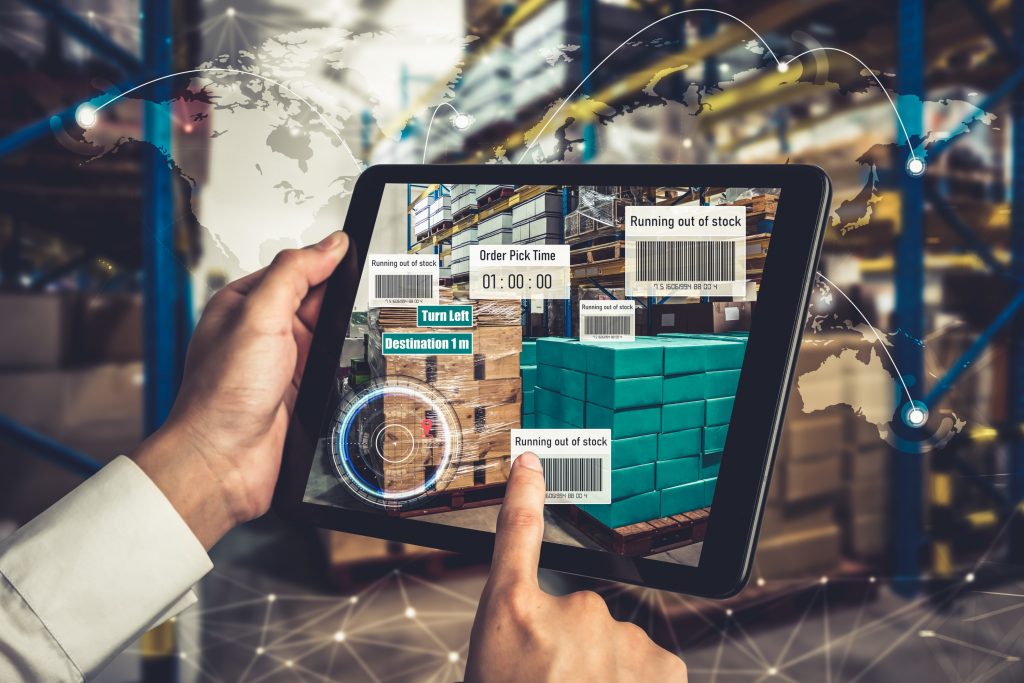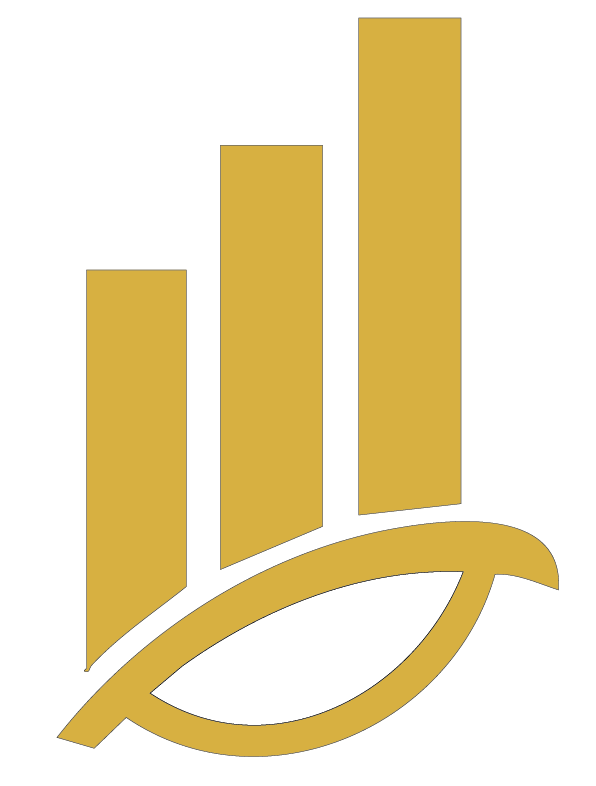In today’s world, exporting leather products goes far beyond producing high-quality goods. Success in this sector depends on a supplier’s ability to ensure Quality Assurance, achieve full Compliance with international standards and regulations, and manage Logistics Excellence with precision. Global markets—especially in Europe, North America, and East Asia—are highly competitive. Brands can only secure and sustain their position if they place these three principles at the core of their export operations.
Specialized export platforms, by integrating advanced technologies, quality control teams, extensive logistics networks, and expert knowledge of international regulations, minimize risks and enhance buyer confidence. In other words, the role of such platforms is not merely the “transfer of goods from producer to buyer” but the management of a complete export ecosystem. This ecosystem covers quality monitoring, acquisition of recognized certifications, logistics coordination, and transparent communication with all stakeholders.
Considering Iran’s leather industry—renowned for its high-quality raw materials, skilled craftsmanship, and competitive pricing—the use of a professional export platform can make a significant difference in achieving global success. This article examines in detail how our platform operates across the three key pillars of quality, compliance, and logistics, and demonstrates how this infrastructure creates a sustainable competitive advantage for Iranian brands in international markets.
Table 1 – Importance of the Three Core Pillars in Successful Leather Exports
| Core Pillar | Definition | Importance in Global Market | Consequences of Non-Compliance |
|---|---|---|---|
| Quality Assurance | The process of monitoring and controlling the quality of raw materials, production, and packaging. | Enhances buyer satisfaction, reduces product returns. | Loss of trust, increased returns. |
| Compliance | Adherence to legal, environmental, and technical requirements of destination countries. | Enables market entry and avoids penalties. | Shipment rejection at customs, heavy fines. |
| Logistics Excellence | Selecting optimal transport methods and implementing smart tracking systems. | Ensures timely delivery, lowers shipping costs, improves customer satisfaction. | Delivery delays, additional costs, product damage. |

2. Quality Assurance Infrastructure
Quality assurance in leather exports does not merely mean a superficial inspection of the goods before shipment; rather, it is a structured, multi-stage, and systematic process that begins with the selection of raw materials and continues until the final delivery to the customer. On our platform, this infrastructure is designed so that at every stage, monitoring, recording, and documentation take place, leaving no room for weak points.
2.1. Stage One – Raw Material Inspection
Before production begins, all raw materials are examined by our quality control team. These services include:
- Screening raw leather for fiber density, uniform thickness, and surface defects.
- Conducting chemical tests to check tanning agents and eliminating hides containing harmful or restricted substances in target markets (e.g., certain chromium compounds banned in the European Union).
- Classifying raw materials by quality and application (bags, shoes, accessories).
Real service example: Partnering with reputable tanneries and conducting on-site inspections of the tanning process before purchasing raw materials.
2.2. Stage Two – Production Process Control
During production, our team carries out step-by-step quality control to ensure that any error is corrected before further progress along the production line.
- In-Process Inspection: Checking cutting accuracy, stitching uniformity, and consistency of dyeing.
- Digital data recording: Each product batch receives an identification code that can be traced throughout all production stages.
- Random sampling: Selecting products at random during production to test tensile strength, abrasion resistance, and flexibility.
Real service example: Having quality inspectors present in workshops and factories to provide daily reports to international buyers.
2.3. Stage Three – Pre-Shipment Inspection
Before packaging and shipment, a final review is conducted to ensure that the product meets the customer’s standards.
- 100% shipment check: Inspecting each item for stitching, cleanliness, odor, and color.
- Simulated shipping condition tests: Assessing product resistance to pressure, temperature variations, and humidity.
- Standard labeling: Including complete information such as country of origin, material, care instructions, and tracking code.
Real service example: Issuing photographic and video reports of each shipment before dispatch for the buyer’s final approval.
2.4. Supporting Technologies for Quality Assurance
Our platform uses advanced technologies for monitoring and documenting quality:
- Machine Vision systems: Detecting microscopic defects on the leather surface.
- RFID and 2D barcodes: Tracking each product from raw material to final destination.
- Cloud-based QA platform: Storing and sharing reports, images, and test data with buyers in real time.
Real service example: Providing an online dashboard for international buyers to confirm shipment quality prior to dispatch.
Table 2 – Comparison of Quality Before and After Using the Platform
| Quality Indicator | Before Using Platform | After Using Platform |
|---|---|---|
| Percentage of returned goods | 8–12% | Less than 2% |
| Color and texture consistency | Variable | Uniform across the entire shipment |
| Raw material traceability | Manual or limited | Fully digital with RFID |
| Buyer reporting | Limited to verbal notes | Full photo and video reports |
| Durability testing | Occasional | Mandatory and systematic for all items |
This infrastructure ensures that the international buyer places an order with complete confidence, knowing that the product has passed through a multi-layered quality control system and that all documentation is fully available.

3. Compliance with Global Standards
In leather exports, high product quality alone is not sufficient. Even if an item is visually and technically excellent, if it fails to meet the legal requirements and standards of the destination country, it may be detained at customs, returned, or even destroyed. Our platform, through the establishment of a comprehensive Compliance System, ensures that every shipment obtains all required permits and certifications before leaving the country—minimizing the risk of rejection in the target market.
3.1. Our Real Compliance Services
Market Compliance Analysis
- Identifying and listing all technical, environmental, and safety regulations in the destination country.
- Reviewing restrictions on chemicals, heavy metals, and dyes (e.g., REACH requirements in the European Union).
- Determining the essential certifications required for market entry (such as LWG, ISO 9001, ISO 14001).
Specialized Pre-Export Testing
- Mechanical tests (tensile strength, abrasion resistance, colorfastness) according to EN ISO standards.
- Chemical tests to detect restricted substances (e.g., formaldehyde, chromium VI).
- Issuing official reports acceptable to customs authorities and buyers.
Documentation and Export Paperwork
- Preparing and officially translating quality and compliance certificates.
- Issuing Certificate of Origin and commercial invoices with complete information.
- Adding legally required product labels (country of origin, material, care instructions, recycling symbols).
Ongoing Regulatory Updates
- Monitoring changes in trade laws and new market standards.
- Immediate notifications to manufacturers to adjust processes or raw materials.
3.2. Practical Examples of Compliance Services
- European Union: Full REACH testing conducted before shipment, with LWG certification issued for the factory.
- United States: Review under Proposition 65 and certification confirming the absence of carcinogenic chemicals in leather goods.
- Japan: Translating care instructions into Japanese and using packaging that complies with JIS standards.
3.3. Compliance-Supporting Technologies
- International Regulatory Database: An up-to-date online repository of country-specific requirements.
- Preventive Alert System: Automated notifications of legal changes for exporters.
- Digital Document Dashboard: Centralized storage and real-time sharing of all certificates and test results with buyers.
Table 3 – Comparison of Compliance Process Before and After Using the Platform
| Compliance Indicator | Before the Platform | After the Platform |
|---|---|---|
| Identification of destination regulations | Reactive, only after problems arise | Preventive, before production begins |
| Quality testing | Occasional and limited | Complete and mandatory in accredited labs |
| Documentation | Incomplete or unofficial | Comprehensive, translated, and customs-ready |
| Risk of shipment rejection | High (5–10%) | Very low (less than 1%) |
This compliance infrastructure ensures that exporters can access premium markets without fear of legal setbacks or customs delays, while securing long-term trust from international buyers.

4. Logistics & Supply Chain Management
In leather exports, logistics goes far beyond mere transportation; it encompasses a series of strategic decisions regarding mode selection, specialized packaging, documentation management, and real-time tracking—factors that ultimately determine whether goods arrive on time, intact, and cost-efficiently. Our platform, leveraging an international logistics network, partnerships with reliable carriers, and smart tracking technologies, provides exporters with full assurance that their shipments are delivered securely, promptly, and economically.
4.1. Our Real Logistics Services
Optimal Mode Selection
- Analysis of weight, volume, product value, and destination to determine the most suitable method (air, sea, road, or multimodal).
- Negotiation with global logistics companies to secure the most competitive rates.
Specialized Packaging for Leather Products
- Use of cartons and wraps resistant to moisture, pressure, and deformation.
- Multi-layered packaging equipped with temperature and humidity sensors for luxury shipments.
- Application of eco-friendly materials compliant with destination market standards.
Documentation & Customs Management
- Issuance of Bill of Lading, Packing List, and Certificate of Origin.
- Pre-submission of documents to destination customs to accelerate clearance.
Real-Time Shipment Tracking & Monitoring
- GPS-based live location tracking.
- Automated alerts in case of delays or route deviations.
- Instant reporting of shipment conditions to both exporter and buyer.
4.2. Practical Examples of Logistics Services
- Fast delivery to Europe: Air freight with moisture-resistant packaging and online delivery confirmation.
- Bulk shipments to East Asia: Sea freight with full insurance coverage and container tracking up to the destination port.
- Neighboring countries: Road freight with temperature-controlled vehicles and direct delivery to customer warehouses.
4.3. Logistics-Supporting Technologies
- TMS (Transportation Management System): Optimizes route planning and delivery scheduling.
- IoT Sensors: Monitors in-package temperature and humidity throughout transit.
- AI Route Optimization: Predicts delays and recommends alternative routes.
Table 4 – Comparison of Shipping Methods in Leather Exports
| Shipping Method | Delivery Time | Relative Cost | Advantages | Disadvantages |
|---|---|---|---|---|
| Air | 3–7 days | High | Fast, secure, ideal for luxury goods | Expensive, weight limitations |
| Sea | 20–45 days | Low | High capacity, economical | Time-consuming, risk of delays |
| Road | 7–15 days | Medium | Suitable for nearby countries, high flexibility | Limited for long distances |
| Multimodal | 10–20 days | Medium–High | Balance of speed and cost | Complex coordination required |
This logistics infrastructure enables exporters to deliver leather products under optimal conditions, at the right time, and with minimal risk. As a result, customer trust grows, repeat orders increase, and brand reputation strengthens in global markets.

5. Digital Integration
In modern exports, technology is not just a supporting tool—it is the backbone of the entire process. In traditional export models, many challenges arise from lack of transparency, slow communication, and poor coordination among stakeholders. Our platform, by leveraging advanced digital systems, creates a smart and integrated network that manages all stages of export in real time with full transparency.
5.1. Our Real Digital Services
CRM (Customer Relationship Management)
- Complete record-keeping of interactions with international clients
- Automated reminders for delivery dates, payments, and follow-ups
- Complaint and request management with prioritization
ERP (Enterprise Resource Planning)
- Integration of production, inventory, sales, and logistics units
- Prevention of duplication and human errors
- Real-time inventory management
Tracking Dashboard
- Live shipment location displayed on the map
- Recording and reporting shipment conditions (temperature, humidity) using IoT sensors
- Instant alerts in case of delays or irregularities
Digital Buyer Portal
- Live monitoring of production progress
- Access to quality control reports with photos and videos
- Ability to approve or request modifications before shipment
5.2. Practical Examples of Digital Technology
- For European clients: Live QC and shipment status reports via a secure portal
- For East Asian clients: Digital coordination between production and logistics via ERP to shorten delivery times
- For North American clients: Preventive alert systems to avoid seasonal shipping delays
5.3. Benefits of Digital Technology in Leather Exports
- Full transparency: Buyers can track order status anytime
- Rapid response to issues: Automated alerts to prevent losses
- Reduced operational costs: Optimized processes and elimination of rework
- Increased buyer trust: Verified data and documentation available at all times
Table 5 – Traditional vs. Digital Export
| Indicator | Traditional Model | Digital Model |
|---|---|---|
| Order Tracking | Phone calls or delayed emails | Real-time online dashboard |
| Quality Control | Manual and unsystematic reports | Digital reports with photographic evidence |
| Logistics Coordination | Dependent on intermediaries | Integrated logistics and customs system |
| Information Transparency | Limited | Complete, 24/7 |
| Response to Issues | Days | Minutes |
This digital infrastructure ensures that exporters and international buyers operate within a unified, secure, and transparent platform, enabling both sides to make informed decisions in the shortest possible time.

6. Competitive Advantage in Global Leather Markets
In the global leather products market, competition is no longer just about price. The winners are brands that can deliver consistent quality, full regulatory compliance, fast delivery, and a transparent purchasing experience. Our platform, by combining the four core pillars—Quality Assurance, Compliance with Standards, Superior Logistics, and Digital Integration— helps Iranian exporters shift from competing solely on price to competing based on value and brand strength.
6.1. Our Real Services for Creating Competitive Advantage
Access to Premium Markets
- Collaboration with a network of European, Asian, and North American buyers
- Full product compliance with destination market standards prior to shipment
Boosting International Customer Trust
- Providing QC reports with photos and videos before shipment
- Ensuring consistent quality in every consignment
Reducing Operational Costs
- Optimizing logistics to reduce shipping costs by 10–15%
- Preventing product returns through proactive compliance
Enabling Higher Value-Based Pricing
- Offering products with international certifications that elevate brand value
- Positioning the brand as a sustainable and responsible producer
6.2. Practical Examples of Competitive Advantage
- Entry into the Japanese market: An Iranian brand, with our platform’s support, obtained all required certifications within six months and successfully launched its products in luxury retail chains in Tokyo.
- Reduced export costs to Europe: By optimizing shipping routes and using multimodal logistics, shipping costs were cut by 12% and delivery time shortened by 8 days.
- International Branding: An Iranian leather shoe producer, leveraging digital QC reports and eco-friendly packaging, was recognized as a “sustainable brand” at the Milan Exhibition.
6.3. Table 6 – Cost-Benefit Analysis of Using the Platform
| Indicator | Traditional Export | Export with Platform | Difference & Advantage |
|---|---|---|---|
| Return Rate of Goods | 8–12% | <2% | Reduced return costs |
| Delivery Time | 20–45 days | 7–20 days | Faster delivery |
| Shipping Cost | High & variable | Optimized | 10–15% savings |
| Entry into Premium Markets | Limited | High | Increased market share |
| Customer Trust | Moderate | Very High | More repeat orders |
With this model, Iranian exporters can confidently enter premium markets, set higher product prices, attract loyal customers, and solidify their brand globally over the long term.

7. Common Challenges & Our Solutions
Exporting leather products is a path filled with opportunities, but it also comes with challenges that, if not properly managed, can lead to customer loss, increased costs, and damage to brand reputation. Our platform, with its preventive model and rapid response mechanisms, identifies and resolves these challenges before they cause harm.
7.1. Challenges and Solutions
Fluctuating Quality Between Shipments
- Challenge: Variations in raw material quality or insufficient production control
- Our Solution: Multi-stage quality control with digital documentation and visual QC reports shared with the buyer before shipment
Complex International Regulations
- Challenge: Constantly changing rules across different markets and varying technical requirements
- Our Solution: Use of an international compliance database and a team of legal consultants for proactive regulatory compliance
Logistical Issues & Delivery Delays
- Challenge: Poor route selection, unsuitable shipping methods, or customs delays
- Our Solution: Route optimization with TMS, real-time shipment tracking, and pre-submission of customs documents at the destination
Lack of Transparency for Buyers
- Challenge: Foreign customers have limited visibility into order progress
- Our Solution: Digital dashboards providing real-time updates on production, QC, and logistics
7.2. Practical Examples of Challenge Resolution
- Quality: For an Italian client, mid-production inspections detected a 5% color defect, which was corrected before shipment.
- Regulations: For a U.S. order, our team reviewed Prop 65 requirements before production, preventing a shipment rejection.
- Logistics: For a shipment to Germany, switching from direct sea freight to a multimodal route (sea + land) cut delivery time from 35 to 21 days.
- Transparency: For an order to Japan, the buyer accessed the QC dashboard and provided final approval before loading.
7.3. Table 7 – Export Conditions Before and After Platform Use
| Challenge | Before Platform | After Platform | Final Result |
|---|---|---|---|
| Quality Variability | Manual inspection, no records | Multi-stage digital QC | Consistent quality, stronger buyer trust |
| Regulatory Compliance | Reactive, after problems arose | Preventive, before production | Zero risk of shipment rejection |
| Logistics | Dependent on intermediaries, fixed routes | Optimized routes with TMS & online tracking | Faster, lower-cost deliveries |
| Information Transparency | Limited to calls and emails | Real-time buyer dashboard | Long-term cooperation & customer loyalty |
This model enables exporters to prevent crises instead of reacting to them, marking the shift from traditional exporting to smart, sustainable exporting.

8. The Role of MMF Market in Supporting Leather Exports
MMF Market is not just an export broker; it is a strategic partner for Iranian brands aiming to establish a strong presence in global markets.
Our mission is to ensure that exporters not only deliver their products safely and on time but also maximize added value, credibility, and profitability throughout the process.
8.1. Key Services of MMF Market
Market Analysis & Targeting
- Providing analytical reports on global trends in leather bags, shoes, and accessories
- Identifying suitable distribution channels in destination countries
- Competitor analysis and brand positioning strategy for Iranian products
Quality Assurance & Full Compliance
- Collaboration with internationally accredited laboratories for technical and chemical testing
- Obtaining essential certifications such as LWG, ISO 9001, REACH before shipment
Smart Logistics Management
- Optimal route planning using TMS and partnerships with trusted logistics providers
- Real-time shipment tracking with continuous updates for buyers and exporters
Digital Integration
- Online dashboard for order status, QC reports, and shipment tracking
- Secure storage and sharing of all certificates and export documentation
Legal & Customs Support
- Preparation and certified translation of export documents
- Pre-submission of customs paperwork to destination authorities for faster clearance
8.2. Practical Examples of MMF Market’s Role
- Entering the French Market: Before shipment, we conducted full REACH and LWG testing and provided reports to the French buyer.
Result: Immediate order approval and long-term partnership initiation. - Reducing Shipping Costs to Canada: By optimizing shipping routes and negotiating with carriers, we reduced costs by 15% and shortened delivery time by 5 days.
- International Branding in Italy: Through digital QC reporting and luxury packaging, an Iranian brand was recognized as a “sustainable producer” at the Milan exhibition.
8.3. Table 8 – Export Without MMF Market vs With MMF Market
| Indicator | Without MMF Market | With MMF Market |
|---|---|---|
| Entry into Premium Markets | Limited, time-consuming | Fast, targeted, strategic |
| Quality Control | Limited to manufacturer’s own checks | Multi-stage with digital QC reports |
| Regulatory Compliance | Checked after production | Preventive checks & certifications obtained |
| Logistics | Dependent on intermediaries | Smart, optimized logistics management |
| Information Transparency | Limited | 24/7 real-time dashboard |
With MMF Market, Iranian brands can enter global markets with minimal risk and maximum efficiency, shifting the game from mere price-based competition to one built on quality, value, and trust.
Today’s leather export market is fiercely competitive. Success belongs only to those brands that consistently deliver stable quality, full regulatory compliance, fast delivery, and transparent processes. The four pillars of success — quality assurance, regulatory compliance, superior logistics, and digital integration — achieve their full impact only when executed in a coordinated and unified system.
This is exactly what our platform and MMF Market provide: a complete value chain management system — from raw material selection to final delivery — ensuring that:
- Return rates drop to below 2%
- Logistics costs are reduced by 10–15%
- Delivery times are shortened by up to 30% compared to traditional models
- International customer trust increases significantly
Key Message to Exporters
Investing in quality, compliance, and logistics is not an additional cost — it is an investment in brand survival and sustainable growth.
In premium markets, buyers are willing to pay more for products that come with guaranteed quality and complete transparency.
Recommended Path for Iranian Brands
- Choose a professional export partner with real experience in global markets.
- Implement a multi-stage quality control system before each shipment.
- Obtain key international certifications to unlock premium markets.
- Optimize logistics with multi-modal shipping routes and smart tracking.
- Fully digitalize processes to enhance transparency and build long-term trust.
Final Outcome
By leveraging a specialized platform like MMF Market, Iranian leather exporters can:
- Enter global markets with confidence, minimal risk, and maximum ROI
- Compete on value and quality, not just price
- Secure and sustain their position in premium, long-term markets
Successful export is not merely about delivering a product; it is about creating a positive customer experience — from the very first interaction to the final unboxing.
And this is precisely the experience that MMF Market delivers for Iranian brands.


No comments yet.